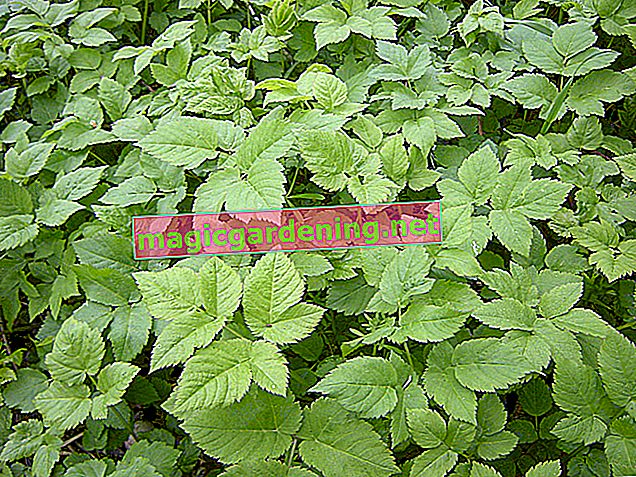
Poisonous relatives - spotted hemlock and dog parsley
It is best not to use the flowers as a guide when determining ground elder! There are some species from the same plant family (umbelliferae) whose flowers look almost the same. For example, the spotted hemlock and the dog parsley, both of which are poisonous. Mixing up can have dire consequences.
also read
- Recognize ground elder: flowers, leaves, fruits and more
- The ground elder during its heyday
- Giersch: This effect should not be underestimated!
Here are the characteristics that you can use to distinguish ground grass from dog parsley and spotted hemlock:
- Spotted hemlock: reddish spots on the stem
- Dog parsley: leaves are much finer pinnate and articulated, not serrated at the edge, deeply incised
- Giersch: three-edged stalk, three-part leaves with three-part single leaves, sawed on the leaf edge, parsley-like odor
Similar plants that are harmless
Then there is the Bibernelle, the wild carrot, the forest angelica and the broad-leaved Merk. They also look very similar to the Giersch. But unlike dog parsley and hemlock, they are not poisonous. Only the broad-leaved Merk can lead to diarrhea after consumption.
Distinguish elderberry and ground elder
Compared to young ground elder, which is extremely healthy, the leaves of the young elder are poisonous. During and shortly after budding, they look like the leaves of a ground elder.
But you can easily tell the difference between these two plants. If you know how: The elderberry has a round stem in cross-section (ground elderly triangular) and does not smell of parsley or carrot when ground.
Differentiate hogweed and ground elder from each other
The foliage of the hogweed also resembles the ground elder. However, it is slightly poisonous. In sensitive people, just touching them can cause skin irritation. Here are the differences between the leaves:
- Bear Claw: pinnate to curved leaves
- Giersch: smaller leaves, serrated on the edge
Tips
The best way to distinguish the ground elder from other umbelliferae is by its triangular stems and toothed leaves!








